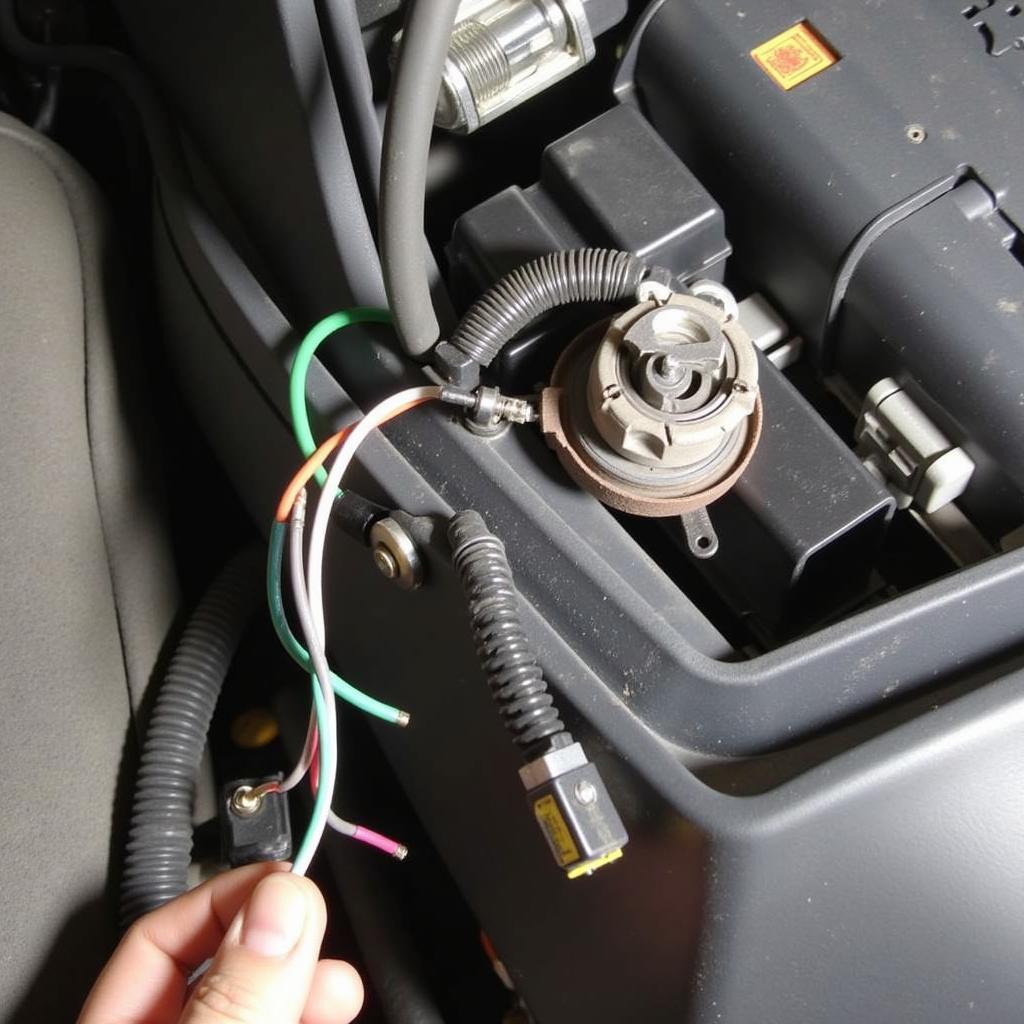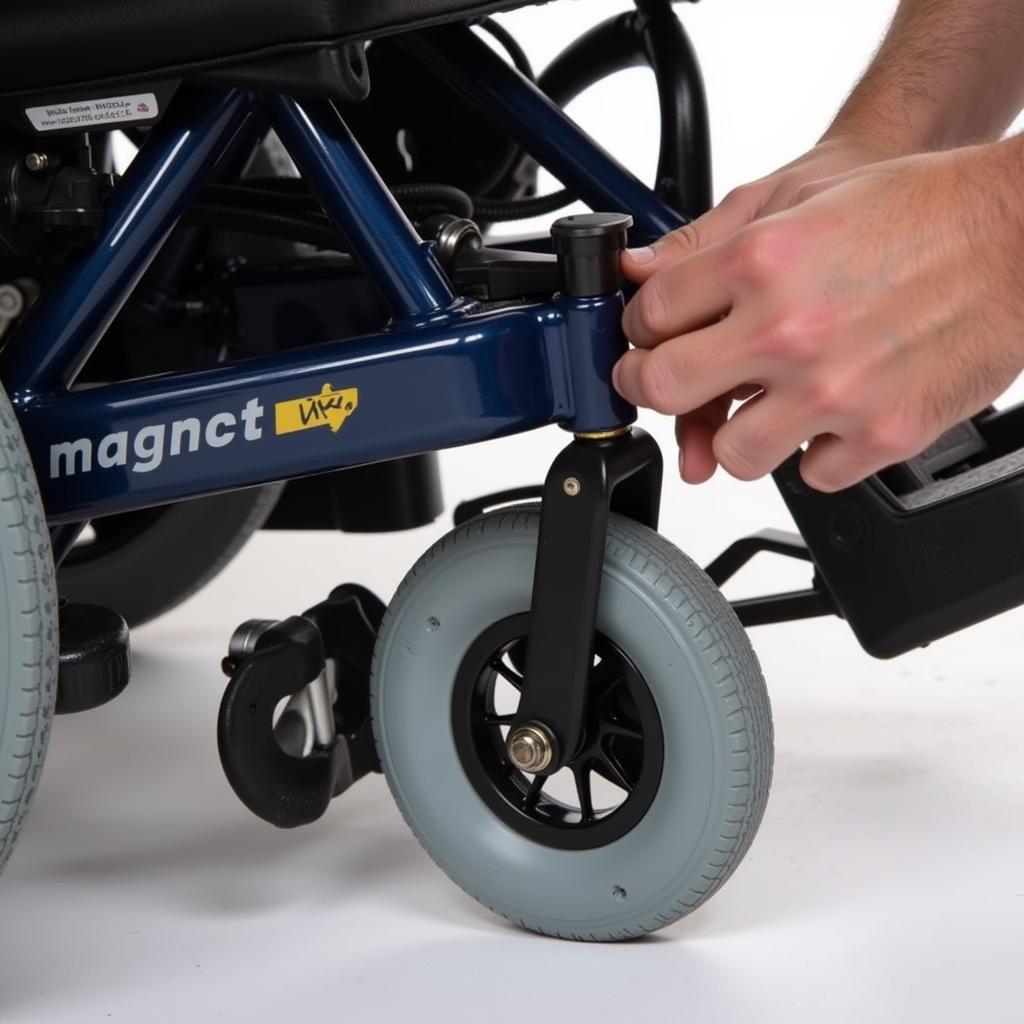Is your 2011 Hyundai Elantra’s brake warning light stubbornly illuminating on your dashboard? Don’t ignore it! This light signals a potential issue with your braking system, a critical safety component of your vehicle. While it can be alarming, understanding the common causes can help you troubleshoot the problem and determine the best course of action.
This article will delve into the potential reasons behind a 2011 Hyundai Elantra brake warning light, equipping you with the knowledge to address this issue head-on.
Common Causes of a 2011 Hyundai Elantra Brake Warning Light
Several factors can trigger the brake warning light in your 2011 Elantra. Let’s explore some of the most common culprits:
1. Low Brake Fluid Level
The most common cause is low brake fluid. Your braking system relies on hydraulic pressure to function correctly. When the brake fluid level drops, often due to worn brake pads or a leak in the system, it can disrupt this pressure and trigger the warning light.
What to do:
- Check your brake fluid level. Locate the brake fluid reservoir under the hood (refer to your owner’s manual for its exact location).
- Inspect the fluid level. The reservoir will have a “MIN” and “MAX” marking. If the fluid is below the “MIN” line, it needs to be topped up.
- Add the correct brake fluid. Consult your owner’s manual for the recommended brake fluid type for your 2011 Elantra.
- Inspect for leaks. If the fluid level is consistently low, there might be a leak in your brake lines, hoses, or calipers. Have a professional mechanic inspect your braking system for leaks.
2. Worn Brake Pads
Brake pads are designed to wear down over time. As they wear thin, the brake caliper pistons have to extend further to engage the rotors. This extension can lead to a lower brake fluid level, triggering the warning light. Most modern vehicles also have a separate brake pad wear sensor that can activate the warning light.
What to do:
- Inspect your brake pads. If you are comfortable with basic car maintenance, you can visually check your brake pads. Look through the spaces between the wheel spokes for the brake pads on the inside of the rotor. If they appear thinner than 1/4 inch, it’s time for a replacement.
- Have a professional inspect your brakes. A mechanic can accurately measure the thickness of your brake pads and determine if they need to be replaced.
3. Faulty Brake Light Switch
The brake light switch is a small sensor located near the brake pedal. It signals your brake lights to activate when you press the pedal. A malfunctioning brake light switch can sometimes trigger the brake warning light on your dashboard.
What to do:
- Check your brake lights. Have someone press the brake pedal while you stand behind the vehicle to ensure your brake lights are working correctly.
- Consult a mechanic. Diagnosing and replacing a brake light switch is best left to a professional.
4. ABS Issue
Your 2011 Hyundai Elantra is equipped with an Anti-lock Braking System (ABS), designed to prevent wheel lockup during hard braking. If there’s a problem with your ABS system, such as a faulty sensor or a malfunctioning control module, it can trigger the brake warning light.
What to do:
- Take note of any unusual braking behavior. Does your ABS engage unexpectedly, or does it feel like it’s not working at all?
- Seek professional diagnosis. ABS issues require specialized diagnostic tools. Take your vehicle to a trusted mechanic or dealership for proper diagnosis and repair.
Don’t Ignore the Warning
A glowing brake warning light is a clear signal that something needs attention. While it might be tempting to dismiss it, especially if your vehicle seems to be braking normally, it’s crucial to address the issue promptly. Ignoring it could lead to more severe and costly repairs down the line, compromising your safety and that of others on the road.
“A properly functioning braking system is non-negotiable when it comes to vehicle safety,” says master mechanic John Riley. “Even if you think it’s a minor issue, it’s always best to err on the side of caution and have a professional inspect your brakes.”
Frequently Asked Questions:
Q: Can I still drive my car with the brake warning light on?
A: While it might seem like you can still brake, it’s strongly advised not to drive with the brake warning light on. This light indicates a potential problem with your braking system, which could lead to reduced braking performance or even complete brake failure.
Q: How much does it cost to fix a brake warning light issue?
A: The cost varies depending on the underlying cause. A simple brake fluid top-up is inexpensive, while replacing worn brake pads or addressing a brake system leak can be more costly.
Q: How often should I check my brake fluid level?
A: It’s good practice to check your brake fluid level at least once a month and more frequently if you notice any changes in your brake pedal feel.


